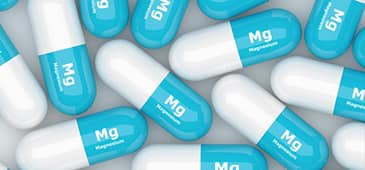
What's Hot
What's Hot
News flashes are posted here frequently to keep you up-to-date with the latest advances in health and longevity. We have an unparalleled track record of breaking stories about life extension advances.
Tart cherry juice drinkers could gain an hour of sleep
 October 30 2017. A double-blind, placebo-controlled pilot study reported recently in the American Journal of Therapeutics found that drinking Montmorency tart cherry juice extended sleep time by an average of 84 minutes in older patients with insomnia.
October 30 2017. A double-blind, placebo-controlled pilot study reported recently in the American Journal of Therapeutics found that drinking Montmorency tart cherry juice extended sleep time by an average of 84 minutes in older patients with insomnia.
"Insomnia is quite common among older adults and it can lead to a range of health issues if left untreated," observed lead researcher Jack Losso, who is a professor in the School of Nutrition and Food Sciences at Louisiana State University Agricultural Center in Baton Rouge. "However, many people are hesitant to resort to medications to help them sleep. That's why natural sleep remedies are increasingly of interest and in demand."
The crossover study randomized 8 insomniacs aged 50 years and older to receive 2 weeks of tart cherry juice or 2 weeks of a similar-tasting placebo consumed each morning and 1-2 hours before bedtime, followed by a 2-week period during which treatments were switched. Sleep questionnaires were completed by the participants at the beginning of the study and at the end of each 2-week treatment period.
At the conclusion of each treatment period, overnight polysomnography confirmed an extra 84 minutes of sleep among those who received 2 weeks of tart cherry juice. Additionally, questionnaire responses following cherry juice consumption reported increased sleep efficiency. Those who received tart cherry juice experienced a decrease in prostaglandin E2 (PGE2, associated with inflammation) and serum kynurenine-to-tryptophan ratio, indicating increased tryptophan availability. (The amino acid L-tryptophan is known to help improve sleep when consumed before bedtime.)
The researchers determined that tart cherry juice procyanidin B-2 inhibited serum indoleanmine 2,3-dioxygenase, which explains, in part, the ability of the fruit to improve sleep efficiency. The pilot study’s results will form the basis for a larger clinical trial.
—D Dye
Calorie restriction promotes longevity through effects on mitochondrial network
 October 27 2017. Research reported on October 26, 2017 in Cell Metabolism helps explain the effects of calorie restriction and activation of AMP-activated protein kinase (AMPK, an energy-sensing protein) on longevity. Harvard researchers have determined that AMPK and calorie restriction promote homeostasis and plasticity of networks formed by the cells’ power plants known as mitochondria.
October 27 2017. Research reported on October 26, 2017 in Cell Metabolism helps explain the effects of calorie restriction and activation of AMP-activated protein kinase (AMPK, an energy-sensing protein) on longevity. Harvard researchers have determined that AMPK and calorie restriction promote homeostasis and plasticity of networks formed by the cells’ power plants known as mitochondria.
Mitochondria networks change shape according to energy demand, however, this ability declines with age. “Dynamic remodeling of mitochondrial networks by fusion and fission promotes maintenance of cellular homeostasis,” explain Heather J. Weir and colleagues at the Harvard T. H. Chan School of Public Health. “Dysregulation of mitochondrial dynamics and aberrant mitochondrial morphology are hallmarks of aging and are thought to contribute to the pathology of numerous age-related pathologies including Alzheimer’s and Parkinson’s disease.”
By restricting calories in the diet of roundworms or using a strain of roundworm in which an AMPK subunit is activated, the researchers found that the roundworms maintained a youthful fused mitochondrial network shape with age. The youthful networks lengthen life by communicating with peroxisomes within the cells to alter fat metabolism.
"Low-energy conditions such as dietary restriction and intermittent fasting have previously been shown to promote healthy aging,” Dr Weir commented. “Understanding why this is the case is a crucial step towards being able to harness the benefits therapeutically. Our findings open up new avenues in the search for therapeutic strategies that will reduce our likelihood of developing age-related diseases as we get older."
"Although previous work has shown how intermittent fasting can slow aging, we are only beginning to understand the underlying biology," added senior author William Mair. "Our work shows how crucial the plasticity of mitochondria networks is for the benefits of fasting. If we lock mitochondria in one state, we completely block the effects of fasting or dietary restriction on longevity."
—D Dye
Higher resveratrol dose linked to lower glucose levels in type 2 diabetics
 October 25 2017. The results of a meta-analysis that were published on September 22, 2017 in Nutrition & Metabolism add evidence to an association between supplementing with resveratrol and improved management of type 2 diabetes.
October 25 2017. The results of a meta-analysis that were published on September 22, 2017 in Nutrition & Metabolism add evidence to an association between supplementing with resveratrol and improved management of type 2 diabetes.
“As a potent antioxidant, resveratrol is a plant-derived polyphenolic compound that possesses anti-inflammatory, antiplatelet aggregation, anti-carcinogenic, cartilage-protective, and anti-aging properties,” Ling Li of Southeast University in Nanjing, China and colleagues write. “Some studies have revealed that resveratrol administration improves insulin sensitivity in diabetic rats and patients with type 2 diabetes mellitus.”
For their analysis, Dr Li and associates selected nine randomized, controlled trials involving a total of 283 type 2 diabetics that compared levels of glucose, insulin and other factors among participants who received resveratrol to those who received a placebo or a control group of diabetics. Resveratrol doses ranged from 8 milligrams (mg) to 3,000 mg per day, administered during a period of 4 weeks to one year.
The analysis concluded that resveratrol supplementation was associated with significantly reduced insulin levels and insulin resistance. Fasting plasma glucose was reduced by an average of 5.2 milligrams per deciliter (mg/dL) among those who received resveratrol compared to placebo or control groups. Further analysis determined that only 100 mg or higher doses of resveratrol were associated with lower glucose levels. Blood pressure mildly improved among those treated with resveratrol.
“Resveratrol supplementation may improve fasting plasma glucose, HOMA-IR (a measure of insulin resistance), and insulin in diabetic patients,” the authors conclude. “The dose and/or duration of treatment with resveratrol might also influence the effect of resveratrol on glucose homeostasis. Therefore, studies with durations longer than three months should be designed to confirm the efficacy of resveratrol and determine the appropriate dosage regimen in managing type 2 diabetes mellitus.”
—D Dye
Carnitine supplementation could improve cold tolerance and more
 October 23 2017. The September 5, 2017 issue of Cell Metabolism reported research findings from the University of Utah School of Medicine that reveal a role for carnitine in the body’s response to cold temperatures.
October 23 2017. The September 5, 2017 issue of Cell Metabolism reported research findings from the University of Utah School of Medicine that reveal a role for carnitine in the body’s response to cold temperatures.
“Cold-induced thermogenesis is an energy-demanding process that protects endotherms against a reduction in ambient temperature,” Judith Simcox, PhD, and colleagues write. “We found that the liver undergoes a metabolic switch to provide fuel for brown fat thermogenesis by producing acylcarnitines.”
“Cold stimulates white adipocytes to release free fatty acids that activate the nuclear receptor HNF4α, which is required for acylcarnitine production in the liver and adaptive thermogenesis,” they continue. “Once in circulation, acylcarnitines are transported to brown adipose tissue, while uptake into white adipose tissue and liver is blocked.”
Acylcarnitines are fatty acyl esters of L-carnitine that were found to increase in young mice during cold adaptation. "It was surprising to see acylcarnitines in the bloodstream," Dr Simcox remarked. "The dogma was that once cells generated them, they used them right away."
With aging comes a decline in the ability to adapt to cold exposure. In the current study, researchers found that a single dose of L-carnitine or palmitoylcarnitine improved aging-related cold sensitivity in mice. Because activating cold adaptation burns calories, improving the process be useful for more than the ability to tolerate cold environments.
"This work is putting a new face on an old character," Dr Simcox stated. "We're changing how we think about cold-induced thermogenesis."
—D Dye
Lower magnesium levels linked with increased mortality risk during up to 40 years of follow-up
 October 20 2017. In an article that appeared on August 30, 2017 in the journal Clinical Nutrition, Xi Zhang of Shanghai Jiao Tong University School of Medicine and colleagues reported an association between decreased serum levels of magnesium and a greater risk of dying from any cause during a follow-up period of up to 40 years.
October 20 2017. In an article that appeared on August 30, 2017 in the journal Clinical Nutrition, Xi Zhang of Shanghai Jiao Tong University School of Medicine and colleagues reported an association between decreased serum levels of magnesium and a greater risk of dying from any cause during a follow-up period of up to 40 years.
The study included data from 14,343 participants in the National Health and Nutrition Examination Survey I Epidemiologic Follow-Up Study. Serum magnesium concentrations were measured upon enrollment between 1971 and 1975. Mortality data was available through 2011.
There were 9,012 deaths during a median follow-up of 28.6 years. In comparison with subjects whose serum magnesium levels were between 0.8 and 0.89 micromoles per liter (mmol/L), having a deficient level of less than 0.7 mmol/L was associated with an adjusted 34% greater risk of dying over follow-up. Those with magnesium levels of less than 0.7 mmol/L had more than two and a half times the risk of dying from stroke than subjects with magnesium levels of 0.8-0.89 mmol/L. Further analysis found the strongest protective association for magnesium in men.
“Several mechanisms may explain the beneficial effects of magnesium, including maintaining glucose and insulin homeostasis, improving lipid metabolism, enhancing the vascular or myocardial contractility and vasodilation, and providing antiarrhythmic and antiplatelet effects,” the authors write. “Moreover, several small secondary prevention randomized trials have shown that oral magnesium supplementation improved endothelial function, reduced thrombosis, and increased cardiopulmonary function and left ventricular ejection fraction among cardiovascular disease patients.”
“Our findings support the hypothesis that serum magnesium may be clinically useful for predicting long-term health outcomes and mortality in the general population,” they conclude.
—D Dye
Insufficient calcium affects significant portion of the globe
 October 18 2017. A review published on October 12, 2017 in Osteoporosis International revealed that populations in many parts of the world do not consume a sufficient amount of calcium, putting them at risk of osteoporosis.
October 18 2017. A review published on October 12, 2017 in Osteoporosis International revealed that populations in many parts of the world do not consume a sufficient amount of calcium, putting them at risk of osteoporosis.
Ethan M. Balk of Brown University and colleagues selected 78 studies that provided data concerning calcium intake from 74 countries. The majority of countries in South, East and Southeast Asian had an average intake of less than 400 mg to 500 mg calcium per day, with the lowest intake in Nepal. Intake in Africa and South America was moderately low at 400 mg to 700 mg daily. The only countries with an average intake of 1,000 mg per day or more were in Northern Europe, however other European countries and the United States had average intakes that were close, at 900 mg to 1,000 mg per day.
"Outside of North America and most of Europe, particularly Northern Europe, there is lower intake than there should be for good bone health," Dr Balk stated. "In many parts of the world, the low average calcium intake may be putting most people at increased risk of fractures and osteoporosis."
The authors noted that Asia-Pacific countries with very low calcium intakes also have less than optimal vitamin D status. “The combination of low calcium intake and low 25-hydroxyvitamin D levels is of particular concern because it is known to increase the risk of osteoporosis,” they write. “In older adults, for instance, supplementation with calcium in combination with vitamin D reduces bone loss, reduces the risk of any fracture, and specifically reduces the risk of hip fracture.”
"This work draws attention to regions where calcium intake needs to be assessed and where measures to increase calcium intake are likely to have skeletal benefits," they conclude.
—D Dye
Trial findings help explain omega-3’s anti-inflammatory effect
 October 16 2017. Findings from a randomized trial reported on October 10, 2017 in Medical Principles and Practice may help provide a better understanding of the anti-inflammatory benefit of omega 3 fatty acids.
October 16 2017. Findings from a randomized trial reported on October 10, 2017 in Medical Principles and Practice may help provide a better understanding of the anti-inflammatory benefit of omega 3 fatty acids.
“The prevalence of both type 2 diabetes mellitus and obesity are increasing worldwide, supporting the possibility of their close relationship. The abnormalities in the inflammatory pathways and the dysfunctions of adipose tissue are linked,” write Maryam Mazaherioun of Tehran University of Medical sciences and colleagues. “Therefore, improving inflammatory situations probably could be a new approach in the management of type 2 diabetes and its complications.”
The double-blind trial included 88 type 2 diabetics who were given 1800 milligrams (mg) of the omega 3 polyunsaturated fatty acid EPA plus 900 mg of the omega 3 DHA, or a placebo daily for 10 weeks. Serum lipids, resistin (a hormone that elevates LDL cholesterol) and monocyte chemoattractant protein-1 (MCP-1) levels were measured before and after the treatment period. (Monocyte chemoattractant protein-1 is a chemokine overexpressed in insulin resistance, type 2 diabetes and obesity that plays a role in inflammatory pathways.)
While only a nonsignificant reduction in resistin occurred among participants who received omega 3 fatty acids, MCP-1 levels significantly declined while remaining unchanged in the placebo group. Atherogenic index (a marker of cardiovascular disease) and triglycerides also improved in participants who received omega 3.
“The present study revealed that the anti-inflammatory effects of n-3 PUFAs might be mediated by targeting MCP-1,” the authors conclude. “More studies are needed to explain the exact molecular mechanisms involved in such beneficial roles of omega 3 polyunsaturated fatty acids, particularly its effects on peroxisome proliferator-activated receptor (PPAR) gene expression and with different doses and duration of supplementation.”
—D Dye
Protein family associated with longer life
 October 13 2017.An article published online on October 13, 2017 in Nature Communications describes the finding of researchers at Case Western Reserve University School of Medicine and University Hospitals Health System of a molecular pathway involved in life span in roundworms and mice.
October 13 2017.An article published online on October 13, 2017 in Nature Communications describes the finding of researchers at Case Western Reserve University School of Medicine and University Hospitals Health System of a molecular pathway involved in life span in roundworms and mice.
"We find that by artificially increasing or decreasing the levels of a family of proteins called Kruppel-like transcription factors (KLF), we can actually get these small worms (Caenorhabditis elegans) to live for longer or shorter time periods," reported first author Nelson Hsieh, MD, PhD. "Since this same family of proteins also exists in mammals, what is really exciting is that our data suggests the KLFs also have similar effects on aging in mammals, too."
The researchers also observed a delay in aging-related blood vessel dysfunction in mice with higher levels of the proteins. "The observation that KLF levels decrease with age and that sustained levels of KLFs can prevent the age-associated loss of blood vessel function is intriguing given that vascular dysfunction contributes significantly to diverse age-associated conditions such as hypertension, heart disease, and dementia" commented senior author Mukesh K. Jain, MD, who is Vice-Dean for Medical Sciences at Case Western Reserve University School of Medicine.
It was determined discovered that KLF proteins control autophagy, used by cells to clear debris that would otherwise accumulate. "As cells age, their ability to perform these functions declines," the authors write. "This likely leads to an unsustainable accumulation of toxic protein aggregates, which ultimately present an obstacle to cellular survival."
"As our population ages, we need to understand what happens to our heart and arteries, as we rely on them to function perfectly later and later on in our lives,” noted Dr Hsieh. “Our findings illuminate what can happen during aging, and provide a foundation to designing interventions which slow these processes."
—D Dye
Multivitamin use associated with fewer chemotherapy-induced peripheral neuropathy symptoms
 October 11 2017. An article appearing on September 1, 2017 in the Journal of the National Cancer Institute reveals a decrease in symptoms associated with chemotherapy-induced peripheral neuropathy in breast cancer patients. “Chemotherapy-induced peripheral neuropathy (CIPN) can interfere with daily function and quality of life, and there are no known preventive approaches,” observed authors Gary R. Zirpoli and colleagues.
October 11 2017. An article appearing on September 1, 2017 in the Journal of the National Cancer Institute reveals a decrease in symptoms associated with chemotherapy-induced peripheral neuropathy in breast cancer patients. “Chemotherapy-induced peripheral neuropathy (CIPN) can interfere with daily function and quality of life, and there are no known preventive approaches,” observed authors Gary R. Zirpoli and colleagues.
“Multiple studies demonstrate that the majority of cancer patients and survivors use multivitamins and other dietary supplements,” noted Jennifer A. Ligibel, MD, of Dana-Farber Cancer Institute in an accompanying editorial. “A review of 32 studies demonstrated that 64% to 81% of cancer patients and survivors overall, and 67% to 87% of breast cancer patients specifically, used dietary supplements after cancer diagnosis. Given widespread usage of dietary supplements in the general US population, some individuals continue prediagnosis supplement use through their cancer therapy. Others initiate supplements after cancer diagnosis; cross-sectional studies of breast cancer patients suggest that 8% to 32% of women initiate dietary supplements after cancer diagnosis, often in hopes of reducing toxicity from cancer therapies or improving cancer outcomes.”
The current study included 1,225 subjects enrolled in a clinical trial in which they received the drug paclitaxel. Questionnaire responses provided information concerning the use of supplements before and at diagnosis. A second questionnaire administered at six months provided information regarding supplement use during treatment.
Multivitamin use prior to breast cancer diagnosis was associated with significantly lower CIPN symptoms, while the use of multivitamin supplements during treatment was associated with a marginal decrease. “Multivitamin use may be associated with reduced risk of CIPN, although individual dietary supplement use did not appreciably affect risk,” Dr Zirpoli and his associates conclude. They recommend prospective randomized trials of vitamin supplementation to confirm their findings.
—D Dye
Low serum calcium levels associated with increased sudden cardiac arrest risk
 October 9 2017. The October 2017 issue of Mayo Clinic Proceedings published the finding of researchers at Cedars-Sinai Medical Center in Los
Angeles of an association between reduced serum calcium levels and a
greater risk of sudden cardiac arrest (SCA), which is fatal for over 90% of those afflicted.
October 9 2017. The October 2017 issue of Mayo Clinic Proceedings published the finding of researchers at Cedars-Sinai Medical Center in Los
Angeles of an association between reduced serum calcium levels and a
greater risk of sudden cardiac arrest (SCA), which is fatal for over 90% of those afflicted.
The study included men and women enrolled in the Oregon Sudden Unexpected Death Study. Sumeet S. Chugh, MD, and colleagues compared data from 267 subjects who had undergone sudden cardiac arrest with 445 control subjects who had not experienced SCA. Calcium levels of those who experienced sudden cardiac arrest were measured within 90 days prior to the event.
Dr Chugh and colleagues determined that each 1 unit decrease in serum calcium was associated with a 1.6 times greater risk of sudden cardiac arrest. Those whose calcium levels were among the lowest 25% of subjects at less than 8.9 milligrams per deciliter (mg/dL) had more than double the risk of sudden cardiac arrest than those whose levels were among the highest 25% at greater than 9.55 mg/dL. "Our study found that serum calcium levels were lower in individuals who had a sudden cardiac arrest than in a control group,” Dr Chugh concluded.
"This is the first report to show that low serum calcium levels measured close in time to the index event are independently associated with an increased risk of SCA in the general population," announced
Hon-Chi Lee, MD, PhD, of the Department of Cardiovascular Medicine at the Mayo Clinic, in an accompanying editorial. He recommended that serum calcium levels should be followed more carefully, that low serum calcium could be considered a risk factor for SCA, and that more research is needed to determine whether those with low calcium would benefit from increased dietary calcium or calcium supplementation.
—D Dye
Mother’s multivitamin use associated with lower risk of autism with intellectual disability in their children
 October 6 2017. On October 4, 2017 the BMJ published the outcome of a study conducted by Brian K. Lee, PhD of Drexel University and colleagues, which uncovered an association between multivitamin supplement use by pregnant women and a lower risk of their children developing autism spectrum disorder with intellectual disability.
October 6 2017. On October 4, 2017 the BMJ published the outcome of a study conducted by Brian K. Lee, PhD of Drexel University and colleagues, which uncovered an association between multivitamin supplement use by pregnant women and a lower risk of their children developing autism spectrum disorder with intellectual disability.
"A potential link between supplement use during pregnancy and autism is intriguing because it suggests a possible avenue for risk reduction," stated Dr Lee, who is an associate professor in the Dornsife School of Public Health and a fellow at the A.J. Drexel Autism Institute.
The study included 273,107 mother-child pairs identified through population registers. Multivitamin, folic acid and iron supplement use was reported during prenatal visits.
The children, who were born between 1996 and 2007, were followed through the end of 2011. During that period, 0.26% of children born to multivitamin supplement users developed autism spectrum disorder with intellectual disability compared to 0.48% of the children born to women who did not use supplements. Mothers’ multivitamin use with or without iron or folic acid or both was associated with a 31% lower risk of their children developing autism with intellectual disability compared to the risk experienced by children of mothers who consumed none of these supplements.
"There have been more studies in recent years about varied aspects of diet during pregnancy and autism risk involving multivitamins, iron, folic acid, vitamin D and more, but the evidence is still inconclusive," noted lead author Elizabeth DeVilbiss, PhD, of the Eunice Kennedy Shriver National Institute of Child Health & Human Development. "If there is a causal relationship, we also need to understand whether there is a critical window for exposure, and what specific nutrients and amounts may be required for protection.”
—D Dye
Vitamin D supplementation associated with less severe asthma attacks
 October 4 2017. Findings from a review and meta-analysis reported on October 3, 2017 in The Lancet Respiratory Medicine add evidence to an association between vitamin D supplementation and a lower risk of severe asthma attacks requiring steroid treatment or hospital admission.
October 4 2017. Findings from a review and meta-analysis reported on October 3, 2017 in The Lancet Respiratory Medicine add evidence to an association between vitamin D supplementation and a lower risk of severe asthma attacks requiring steroid treatment or hospital admission.
Researchers at Queen Mary University of London analyzed data from seven randomized, controlled trials that evaluated the effects of vitamin D supplementation in a total of 955 asthmatics treated with standard asthma medication. The team concluded that supplementing with vitamin D was associated with a 26% lower adjusted rate of asthma attacks that required treatment with oral or injectable steroids and a 50% lower risk of experiencing one or more attacks that required emergency department treatment and/or hospitalization. The protective effect of vitamin D supplementation appeared to be stronger among those who initially had low levels of the vitamin, however, the evidence was not definitive. No difference in serious adverse events was observed between participants who received vitamin D and those who received a placebo.
"These results add to the ever-growing body of evidence that vitamin D can support immune function as well as bone health,” stated lead researcher Adrian Martineau. “On average, three people in the UK die from asthma attacks every day. Vitamin D is safe to take and relatively inexpensive so supplementation represents a potentially cost-effective strategy to reduce this problem."
Professor Hywel Williams, who is the Director of the National Institute for Health Research Health (NIHR) Technology Assessment Programme, commented that "The results of this NIHR-funded study brings together evidence from several other studies from over the world and is an important contribution to reducing uncertainties on whether Vitamin D is helpful for asthma - a common condition that impacts on many thousands of people worldwide."
—D Dye
Low vitamin D levels predict ED in diabetics
 October 2 2017. An article published on September 23, 2017 in The Aging Male reveals an association between decreased serum vitamin D levels and a greater risk of erectile dysfunction (ED) in diabetics.
October 2 2017. An article published on September 23, 2017 in The Aging Male reveals an association between decreased serum vitamin D levels and a greater risk of erectile dysfunction (ED) in diabetics.
“The present study is the first study demonstrating the higher rate of ED in diabetic male patients with vitamin D deficiency,” announce authors Sema Basat and colleagues.
The study included 98 diabetic men between the ages of 18 and 80 years. International Index of Erectile Function (IIEF-5) questionnaire scores determined the presence and severity of ED, with higher scores indicative of no ED. Among the 77 participants with the condition, 45 had moderate ED and 32 had severe ED. Blood samples were analyzed for 25-hydroxyvitamin D levels [25(OH)D], hormones and other factors.
A moderate correlation was observed between increased vitamin D levels and higher IIEF scores, particularly among those between the ages of 45 and 65 years of age. Men whose IIEF-5 scores were indicative of severe ED had vitamin D levels that averaged only 10.51 nanograms per milliliter, which was significantly lower than the average levels of participants with no or moderate ED.
“There is a significant relationship between 25(OH)D deficiency and ED in male patients with type 2 diabetes mellitus,” the authors write. “This relationship is considered to be mediated by increased nitric oxide production by 25(OH)D in endothelial cells through various pathways, inhibition of apoptosis and prevention of endothelial dysfunction by preventing against oxidative stress. In conclusion, 25(OH)D levels are correlated with ED scores especially in men with type 2 diabetes mellitus aged between 45–65 years.”
—D Dye

